Graphics Reference
In-Depth Information
radius
PB
if the sphere is centered on a point
P
of the ellipse and radius
QB
if it is
centered on a point
Q
of the hyperbola.
12.13.1 Theorem.
The central cyclide with the curves defined in (12.61) as its focal
curves has a parameterization
(
)
+
2
(
)
(
)
kc a
-
cos
qy
cos
b
cos
q
b
sin
q
a
-
y
qy
k
cos
b
sin
yq
qy
cos
cos
c
-
k
Ê
Á
ˆ
˜
(
)
=
p
qy
,
,
,
,
(12.62)
ac
-
cos
qy
cos
ac
-
cos
cos
ac
-
cos
where 0 £q, y<2p, and is defined by the equation
2
(
)
=
2
2
2
2
2
2
22
(
)
xyzkb
++-+
4
x k
-
+
4
by
.
(12.63)
Proof.
See [Fors12]. We shall only sketch a derivation of the parameterization in
(12.62), which can also be found in [Gray98] or [Boeh90]. Let us parameterize the
points
P
on the ellipse
E
and points
Q
on the hyperbola
H
by
(
)
q
Æ
P a
cos
q
,
b
sin
q
,
and
(
)
y
Æ
Qc
sec
y
,
b
tan
y
.
One shows that
AP
=+
a
c
cos
q
and
PQ
=
a
sec
y
-
c
cos
q
.
If we write the length L =Ω
AP
Ω+Ω
PB
Ω in the form L = a + k, then we can show that
Ω
PB
Ω = ΩaΩ and Ω
BQ
Ω = ΩbΩ, where
a
=-
k
c
cos
q
and
b
=
a
sec
y
-
k
.
In fact, the signed quantities a and b are such that
B
can be expressed in barycentric
form as
1
ab
ab.
(
)
B
=
P
+
Q
+
If we express all the variables in this representation of
B
in terms of q and y, we will
get the formula p(q,y) in equation (12.62).
Theorem 12.13.1 makes it easy to work with a ring central cyclide. Its intersec-
tion with the planes z = 0 and y = 0 determine it completely. Therefore, one can use
these cross-sections to visualize the surface and manipulating it is simply a matter of
changing the values of a, c, and k. Also, equation (12.63) shows that the central cyclide
is a fourth-degree surface. Parabolic cyclides are surfaces of degree three.
Here are a few more details about cyclides. There is a natural two-level geomet-
ric classification of cyclides (see [Boeh90] and [ChDH89]). At the top level there is the
division of cyclides into central, parabolic, revolute, or degenerate cyclides depend-



